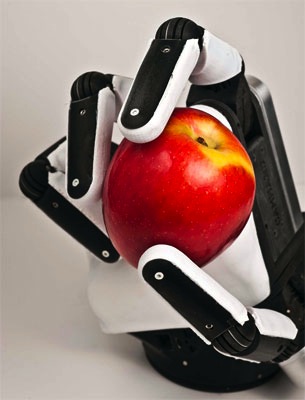Robots Don’t Get Carpal Tunnel
 Affordable robotic appendages able to mimic the dexterity of the human hand may be closer than we think. Researchers at Sandia National Laboratories have taken the novel approach of incorporating components originally designed for cell phones into their modular design.
Affordable robotic appendages able to mimic the dexterity of the human hand may be closer than we think. Researchers at Sandia National Laboratories have taken the novel approach of incorporating components originally designed for cell phones into their modular design.
The Sandia Hand imitates the internal structure of the human hand with an expected cost of $10K compared to the $250K price tag for current state-of-art robotics digits.
The new model not only imitates its physical counterpart, but also improves upon it. With fingers connected by magnets, it’s easy to swap out a defective digit for a new one or upgrade to a specific tool with extended capabilities for a specific task. Sandia designers have also found that four fingers (with one acting as an opposable thumb) is more than adequate for most tasks and have configured their creation appropriately.
Robotic appendages with the ability to mimic human movements and further, use already available tools, is a long standing goal for robotics researchers. Possible applications include remote diffusion of improvised explosive devices (IEDs) and other dangerous tasks; however, any application currently done with human hands is possible. An affordable robotic hand could further increase the tasks that robots could perform and spark a manufacturing revolution in the design, application, and maintenance of such technology.
To read more about this amazing innovation, click on the link below to read the full article on Scientific American.










